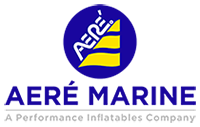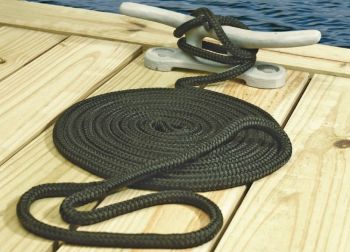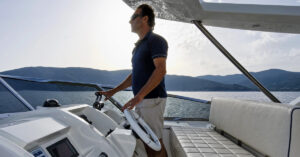Avid boaters know that with the right tools, boating (and its associated tasks) is a breeze. Although the most difficult part is figuring out which tools and accessories do what, that can be solved by a little research and articles such as this one. This article will touch upon spring lines which, when they are used properly, do a myriad of things like simplifying docking, getting in and out of tight spaces, and limiting a boat’s fore-and-aft movement.
Spring lines should be made of nylon since it stretches under tension to reduce shock loads. Additionally, spring lines should be a few feet longer than the boat so that they are long enough to grasp easily. They should run diagonally aft or forward from the vessel at a shallow enough angle in order to limit fore-and-aft movement. An aft spring line is tied to an area on the dock, aft of its position attached to the boat, in order to prevent a boat from moving forward. Conversely, a forward spring line stops a boat from moving aft and is tied to the dock forward of its position attached to the boat. You can attach spring lines at the stern, bow, at midship, or to spring cleats. The pivot point for your maneuvers is whichever cleat on your boat the spring line is attached to so that the force of the prop against the spring line will result in your boat rotating around it. As with most things, practice makes perfect, so do not feel defeated when your first few tries at using spring lines do not go smoothly.
Of their many uses, spring lines can be used to “spring” off a dock. Imagine a scenario in which you are tied up to a dock with a boat right in front of you and a breeze is piping up from the starboard-side bow quarter and pushing you aft and onto the dock. Spring lines can be used to swing the bow out, while also keeping clear of the boat that is directly in front of you. Springing off a dock is all about teamwork, so the entire process begins with you briefing your crew on the techniques and what is about to happen. The process is a three-step one. But before going through any of the steps, double-back the forward spring line and cleat off the bitter end on the stern cleat. Designate one crew member to handle the forward dock lines and be prepared to deploy a fender in case you get too close to the boat in front of you. Another crew member should be responsible for handling the stern dock lines and be ready to deploy a fender between the stern and the dock. Once this is set in place, you are ready to spring off the dock.
Spring lines are also especially helpful in close quarters docking situations. They can be used to get into tights spaces on a fuel dock, which can be an extreme pain. When it comes to close-quarters docking, as with springing off a dock, different crew members are responsible for different things. The bow crew should set up a spring line off the bow cleat on the side nearest the dock as you are approaching the dock to help you get into that tight space. The line should not be cleated off, but rather looped under the bow cleat to allow the bow crew to control it as you are pulling into the slip. You and every member of your crew must coordinate the use of both the tension and the throttle on the spring line in order to move the boat in the direction you need.
Although mastering the use of spring lines is no easy feat and is not something that will happen instantaneously, it is surely worthwhile. Using spring lines will get easier with each attempt, and in turn, docking will become much less stressful. Once using spring lines becomes second nature to you, you may even discover a few more uses for them. You won’t know unless you try!









